International Journal of Aquaculture and Fishery Sciences
Comparison on some biological aspects of Labeobarbus intermedius Rüppell 1835 and Labeo forskalii Rüppell 1836 in Beles and Gilgel Beles rivers, abay basin, Ethiopia
Zeleke Berie*
Cite this as
Berie Z (2020) Comparison on some biological aspects of Labeobarbus intermedius Rüppell 1835 and Labeo forskalii Rüppell 1836 in Beles and Gilgel Beles rivers, abay basin, Ethiopia. Int J Aquac Fish Sci 6(2): 050-055. DOI: 10.17352/2455-8400.000056Length-weight relationship, Fulton Condition Factor, Sex ratio and fecundity of Labeobarbus intermedius and Labeo forskalii of Beles and Gilgel Beles Rivers were studied. Fishes were sampled using gill nets of various stretched mesh sizes, and hooks and lines. A total of 548 Labeobarbus intermedius and Labeo forskalii fishs were caught in Beles and Gilgel Beles Rivers. Descriptive statistics was used to present the data. One way ANOVA was used to analyze the Fulton condition factor of fishes. The length-weight relationships were curvilinear for L. forskalii and L. intermedius in both rivers. L. forskalii showed isometric growth while L. intermedius exhibited positive allometric growth in Beles and Gilgel Beles Rivers. L. forskalii and L. intermedius were found to be in better condition in both rivers (ANOVA, P < 0.05). Females were in better condition than males in both rivers. L. forskalii had a better condition factor (FCF) in the dry than in the wet season (ANOVA, P < 0.05). However, L. intermedius had better mean FCF in wet than in dry season (ANOVA, P > 0.05). Females were more numerous than males in the total sexed specimens. Absolute fecundity of L. intermedius increased with an increase in fish size, and ranged from 1535 to 13864 with a mean of 3173 eggs. In general, L. forskalii and L. intermedius were found in better condition in Gilgel Beles and Beles Rivers, respectively. Therefore, sustainable utilization and conservation measures should be taken in the two rivers.
Introduction
Background information
Although Ethiopia has high production potential and diversity of fish fauna, satisfactory fishery investigations have been carried out only in a few of the numerous freshwater bodies. Substantial icthyofaunal information appeared in publication on Biology, Limnology and Ecology of the commercially important fish species in lakes and rivers: Lake Afdera [1], Lake Ziway , Lake Awassa [2], Lake Chamo Lake Hayq [3], Lake Tana [4,5], eco-regions, diversity and conservation of the freshwater fish fauna of Ethiopia [6] and introduction and transplantation of freshwater fish species in Ethiopia [7]. In addition, projects of the Joint Ethio-Russian Biological Expedition (JERBE) and the Wageningen Agricultural University, The Netherlands have explored the icthyofauna of Lake Tana and surrounding rivers [8]. JERBE [9,10] also assessed fish diversity in Beles and Gilgel Beles Rivers and found a total of 25 and 4 species of fishes, repectively. Beles and its tributary Gilgel Beles rivers contain large population of edible fish species. L. intermedius and L. forskalii were the most abundant species on these rivers.
As in many parts of the Ethiopia, human activities degrade fish habitat in numerous ways in study area. Wild fire, logging, impoundment, canalisation and agricultural activities are some of the major activities that degrade fish habitat. At present, we have no evidence of species extinction from Ethiopian freshwaters resulting from degradation of environment. One of the main reasons is a lack of definitive information on icthyofauna. The territory of Ethiopia seems to be among regions of the African continent which are least explored for their icthyofauna [11]. Beles and Gilgel Beles Rivers are flowing to the lower course of Abay in which adequate attention has not been given in the study of biology and economical potential of the fish fauna due to the presence of some inaccessible mountains and rugged geographical features. The absence of fishery data on these rivers triggers the researcher to conduct this study. Therefore, the study attempted to provide answers to the following leading research question: What does the biology (Reproduction, Condition Factor and Length- weight relationship) of L. intermedius and L. forskalii look like in of these rivers?
The general objective of this study was to generate base line scientific information/ data about fish biology of L. intermedius and L. forskalii for management and sustainable utilization of the resources, and recommend ways and means of conserving the diversity of the icthyofauna of the Beles and Gilgel Beles Rivers. Thus, the specific objectives of the study were to assess length - weight relationship of L. intermedius and L. forskalii, to compare the well - being of L. intermedius and L. forskalii with respect to sex and season and asses sex ratio and estimate fecundity of L. intermedius and L. forskalii.
Materials and methods
Site selection: A reconnaissance survey was conducted together with the research advisor to fix sampling sites. The survey was conducted in four sub areas along the Beles and Gilgel Beles Rivers. Two sampling sites were selected from each river taking into consideration the velocity of water, habitat type, altitude, depth of water, vicinity to road and substrate type (Table 1). These sub areas are namely; sub area I (Gilgel Beles at Mender hullet), sub area II (Gilgel Beles at College), sub area III (Beles at bridge) and sub area IV (Beles at Babizenda) (Figure 1). Babizenda sampling site is located below the confluence of the rivers.in Guba woreda.
Fieldwork: Three surveys were conducted to collect specimens from the sampling sites. The samples were taken in November, March and May. November and May were wet months while March was dry month. Gill nets with 6 cm, 8 cm, 10 cm, 12 cm and 14 cm mesh sizes were used to collect fishes. Monofilament gill nets were also used to collect juvenile and smaller sized fishes. Multiple hooks and lines were used in areas where gill nets were not suitable. The gill nets and multiple hooks and lines were set using swimmers across the river diagonally late in the afternoon (5:00 PM) and left in the rivers for about 15 hrs, and retrieved in the next morning (8:00 AM). However, monofilament gill nets were set for an hour during daytime.
Immediately after retrieval, fishes were removed and total length and total weight of each specimen were measured. Total length was measured to the nearest 0.1 cm and total weight was measured to the nearest 0.1 g. After length and weight measurement, each specimen was dissected and its sex determined by inspecting the gonads. Then, specimens and gonads of dominant species were preserved in 10 % and 5 % formalin, respectively.
During fieldwork, beam balance, measuring board, buckets, plastic bowls, collection bottles, strings, camera, syringe, GPS and other materials were used when required.
Laboratory studies: The specimens were soaked in tap water for a week to wash the formalin from the specimens. Then, they were transferred to 75 % ethanol.
Data analysis: Generally, SPSS for Windows (version 10) and MINITAB (version 14) were used to perform the calculations and statistical analysis.
Length- weight relationship
The relationship between total length and total weight was calculated using least squares regression analysis [12] as follows:
TW = a * TLb
Where, TW = Total weight in grams
TL = Total length in centimeters
a and b = intercept and slope of the equation, respectively.
Significance of the relationship was statistically tested using ANOVA.
Condition factor
The well-being or plumpness was studied by calculating Fulton condition factor [12,13]. Fulton condition factor (%) was calculated as:
FCF= X100
Where, FCF= Fulton condition factor,
TW= Total weight in grams, and
TL= Total length in cms.
Estimation of sex ratio
Sex ratio (female: male) was calculated for total sample. Chi-square test was employed to test if sex ratio varied from 1:1 in the total sample.
Fecundity
Fecundity is the measure of reproductive potential in fishes. Absolute fecundity was estimated by the Gravimetric method [14]. Three sub-samples of 1g eggs were taken from different part of the ovary and counted, and an average of these was calculated. Then, the total number of eggs per ovary was calculated by extrapolation from the mean calculated. The total number of eggs was estimated by the following formula:
Where X = Total number of eggs to be calculated
N = Number of eggs counted in a sample of known weight
W = Total weight of all eggs
w = weight of the sample
Relation between fecundity and total length, total weight and gonad weight were analysed using regression analysis.
Results and discussion
Length frequency distribution of L. intermedius and L. forskalii
A total of 548 Labeobarbus Intermedius and Labeo forskalii fishs were caught in Beles and Gilgel Beles Rivers.L intermedius, the most abundant species had a total length range of 10.6 cm to 69.5 cm with a mean ± SD of 26.419 ± 7.563 cm. L. forskalii, the second most abundant species had total length range of 10.2 cm to 44.7 cm with a mean ± SD of 26.951 ± 7.477 cm length (Figure 2).
Some biological aspects of L. intermedius and L. forskalii
Length-weight relationship: The relationship between total weight and total length, for L. intermedius and L. forskalii, was curvilinear and statistically significant (ANOVA, P < 0.05) (Table 2). The line fitted to the data was best described by the regression equations shown in Table 2, and Figs. 2 and 3. In fishes, the regression coefficient b = 3 describes isometric growth. The value is exactly 3 if the fishes retain the same shape and their specific gravity remains unchanged during lifetime [15]. However, some fishes have value greater or less than 3, a condition described as allometric growth [12]. From Table 3, Figures 3,4, it can be seen that L. forskalii in Beles and Gilgel Beles Rivers show isometric growth, i.e. the weight of these fishes increases as the cube of length because the b value is nearly 3. The b-value obtained in this study for L. forskalii in Beles and Gilgel Beles Rivers are close to the value reported for L. forskalii in Sanja River [16] and L. horie from Lake Chamo [17]. From Table 3, Figures 3,4, it can be seen that L. intermedius in Beles and Gilgel Beles Rivers show allometric growth. The result obtained in this study for L. intermedius in Beles and Gilgel Beles Rivers were not in agreement with Demeke Admassu and Elias Dadebo [2] for the species in Lake Awassa, Wassie Anteneh [18] and Nagelkerke, et al. [8] for Lake Tana and Genanew Tesfaye [16] for Angereb River and Sanja Rivers. Observed differences in parameters b calculated in the present study when compared with those obtained by other authors are likely due to differences in the number of specimens examined, differences in the utilized length ranges or differing study seasons, food availability, feeding rate, gonad development and spawning period [12].
Fulton Condition Factor (FCF): L. forskalii and L. intermedius were found in better condition in Gilgel Beles and Beles Rivers, respectively. Fulton condition factor values of L. intermedius ranged from 0.93 to 1.23 in Beles River and 0.43 to 1.73 in Gilgel Beles River. Fulton condition factor values of of L. forskalii ranged from 0.79 to 1.26 in Gilgel Beles River and 0.49 to 1.29 in Beles River. There were significant differences in the mean Fulton condition factor for both L. forskalii and L. intermedius between Beles and Gilgel Beles Rivers (ANOVA, P < 0.05) (Table 3). Females were found in better condition than males in both Beles and Gilgel Beles Rivers (Table 5). The difference in mean Fulton condition factor for L. forskalii and L. intermedius was insignificant both in Beles and Gilgel Beles Rivers except L. intermedius in Beles River (ANOVA, P > 0.05) (Table 4). Fulton condition factor calculated for L. intermedius in Beles and Gilgel Beles Rivers were comparable to those reported of L. intermedius in Lake Awassa [2] and in Sanja River [16]. Fulton fondition factor calculated for L. forskalii in Beles and Gilgel Beles Rivers were close to the value reported for L. forskalii in Angereb and Sanja Rivers [16].
Mean Fulton condition factor of L. forskalii was greater in dry season than wet season (ANOVA, P < 0.05) (Table 5). However, mean Fulton condition factor of L. intermedius was greater in wet season than dry season (ANOVA, P > 0.05) (Table 5). Demeke Admassu and Elias Dadebo [2] also found insignificant variation (ANOVA, P > 0.05) in Fulton condition factor for L. intermedius between dry and wet seasons in Lake Awassa. However, Genanew Tesfaye [16] reported significant variation (ANOVA, P < 0.05) for L. intermedius and L. forskalii between dry and wet seasons in Sanja and Angereb Rivers.
The measure of fish condition can be linked to the general fish health, fat and lipid content, prey or food availability, reproductive potential, environmental conditions and water level fluctuations. In general, high condition is associated with higher energy (fat) content; increased food base, reproductive potential, or more favorable environmental conditions [19]. For instance, better FCF of L. forskalii and L. intermedius in dry and wet seasons respectively was associated with large ovarian development. The low FCF of fishes of the rivers is probably because of fluctuations in factors such as food quantity and quality, water level, flow rate and temperature.
Reproductive biology
Sex ratio: In general, females were more numerous than males in the total sexed specimens (Table 6). The sex proportions of each species were not significantly different (Chi-square, P > 0.05) from the theoretical 1:1 ratio except L. intermedius (Table 6). The imbalance was most probably related to vulnerability of fish to gears. Increased vulnerability of females by some gears due to increased ovarian development, as suggested by Tayler and Villoso (1994), can be the cause for the deviation from 1: 1 sex ratio.
Fecundity: Fecundity was determined in fish fork lengths of 18.4 to 46.7 cm, total body weights of 113 to 1215 gm and with gonad weights of 3 to 68.3 gm. In 55 female L. intermedius, fecundity varied from 1535 to 13864 with mean 3173 eggs (Table 7). Fecundity of L. intermedius increased with an increase in fish size (Table 7). Fecundity of L. intermedius was linearly related to total weight and gonad weight, and curvilinearly to fork length (Figure 5). The lines of best fit to the relationships were described by the following regression equation:
Log eggs = 2.o6 Log FL + 0.6114 (R2 = 0.8492 )
F = 9.8138W + 497.35 (R2 = 0.8491)
F = 189.13Gw + 1095.8 ( R2 = 0.8807)
Where Gw, W, FL and AF are gonad weight, body weight, fork length and fecundity, respectively.
The information about fecundity of large Barbus fish species in Africa is scarce [20]. There are few data on the fecundity of Ethiopian large Barbus. The most recent studies and publications were done these of Alekseyev, et al. [21] and Wassie Anteneh [18] from Lake Tana and its tributaries. Compared to Lake Tana Labeobarbus spp., a similar size of female L. intermedius in Beles and Gilgel Beles Rivers laid more eggs. The fecundity of L. brevicephalus and L. truttiformis ranged from 1284 to 4563 and 1732 to 8134 eggs, respectively in Lake Tana [18]. The average fecundity of the small (precocious) and big (normal), ‘intermedius’ was 4.6 thousand and 11.7 thousand eggs, respectively in tributaries of Lake Tana (Gelda and Gumara Rivers) [21]. Fecundity of Labeobarbus in other African lakes is moderately high [22]. A 30 cm female L. aeneus in Orange River drainage system carries about 30,000 eggs on average but a similar size female L. intermedius in Beles and Gilgel Beles Rivers lays about 4690 eggs. According to Oliva-Paterna, et al. [23,24], fast growth, early maturity and high fecundity are characterstics of unstable environment. Therefore, the main cause for the above variations might be due to genetic or habitat differences. Generally, the fecundity of L. intermedius in Beles and Gilgel Beles Rivers was strongly correlated with their gonad weight, body weight and length. Similar result was obtained by Alekseyev, et al. [20], in tributaries of Lake Tana.
Conclusions and recommendations
Conclusions
The length-weight relationships were curvilinear for L. forskalii and L. intermedius in both Beles and Gilgel Beles Rivers. From length-weight relationship, L. forskalii showed isometric growth in both Beles and Gilgel Beles Rivers i.e. the weight of these fishes increases as the cube of length because the b value is nearly 3. However, L. intermedius exhibited positive allometric growth in both Beles and Gilgel Beles Rivers.
L. forskalii and L. intermedius were found in better condition in Gilgel Beles and Beles Rivers, respectively. L. forskalii was found in better condition in Gilgel Beles River than Beles River (ANOVA, P < 0.05). However, Mean Fulton condition factor for L. intermedius was greater in Beles River than Gilgel Beles River (ANOVA, P < 0.05). Females L. intermedius and L. forskalii were found in better condition than males both in Beles and Gilgel Beles Rivers. Mean Fulton condition factor of L. forskalii was greater in dry season than wet season. However, Mean FCF of L. intermedius was greater in wet than dry season. There was significant difference in the mean FCF for L. forskalii between dry and wet seasons in total catch (ANOVA, P < 0.05). However, there was no significant variation in FCF of L. intermedius seasons (ANOVA, P > 0.05).
Fecundity of L. intermedius was linearly related to total weight and gonad weight, and curvilinearly to fork length in the two rivers.
Recommendation
In order to have a better knowledge of biology and behaviour of most of the species are still lacking. Therefore, further studies are required on the biology and behaviour of fishes in the study area. In addition, detailed studies and investigations are required on diversity and abundance of fish species in Abay basin in general and in Beles and Gilgel Beles Rivers in particular, especially at the lower reaches of Beles River.
I thank the Pro. Abebe Getahun & Dr. Eshetie Dejen for there assistance and guidance throughout the course of this study. Additionally, I thanks Amhara Regional Agricultural Research Institute (ARARI) through its Bahir Dar FOALRC for their assistance all logistic necessities for fieldwork.
- Getahun A (2001) Lake Afdera: a threatened lake in Ethiopia. SINET: Ethiop J Sci 24: 127-131. Link: https://bit.ly/2B92PuW
- Admassu D, Dadebo E (1997) Diet composition, Length-weight relation and condition factor of Barbus species Rüppell, 1836 (Pisces: cyprinidae) in Lake Awassa, Ethiopia. SINET: Ethiop J Sci 20: 13-30. Link: https://bit.ly/2UOlBim
- Kebede E, Tefera G, Taylor WD, Mariam ZG (1992) Eutrophication of Lake Hayq in the Ethiopian high lands. J Plankton Res 14: 1473 -1482. Link: https://bit.ly/2Awp9yP
- Dejen E (2003) The small barbs of Lake Tana. Doctoral thesis, Experimental Zoology Group, Wageningen University, 190.
- Wudneh T (1998) Biology and management of fish stock in Bahir Dar gulf, Lake Tana, Ethiopia. PhD Thesis, Wageningen Agricultural University, Wageningen 143. Link: https://bit.ly/2YDj8bv
- Getahun A (2005) Freshwater Eco-regions of Ethiopia. In: Theime et al., (eds). Freshwater eco-region of Africa. A conservation assessment/ Island press, Washington, D.C., U. S. A.
- Tedla S, Meskel F (1981) Introduction and transplantation of Freshwater fish species in Ethiopia. SINET: Ethiop J Sci 4: 69-72.
- Nagelkerke LAJ, Sibbing FA, van den Boogaarrt JGM, Lammens EHRR, Osse JWM (1994) The barbs (Barbus spp.) of Lake Tana: a forgotten species flock? Environmental Biology of Fishes 39: 1-22. Link: https://bit.ly/2YAxzgq
- Jerbe (1999) Report on the studies carried out by the freshwater biology group of the joint Ethio - Russian biological expedition.
- Jerbe (2000) Report on the studies carried out by the freshwater biology group of the joint Ethio-Russian biological expedition.
- Golubstov AS, Darkov AA, Dgebuadze Yu Yu, Mina MV (1995) An Artificial key to fish species of the Gambela region (The White Nile basin in the limits of Ethiopia). Joint Ethio-Russian Biological Expedition, Addis Ababa, Ethiopia. 84. Link: https://bit.ly/2Y7yO7P
- Bagenal TB, Tesch FW (1978) Age and growth. In: Bagenal, T.B. (ed). Methods for Assessment of fish production in fresh waters. Black well, Oxford, New York 101-136.
- LeCren GD (1951) The length-weight relation ship and seasonal cycle in gonad weight and condition in the perch (Perca fluviatilis). J Anim Ecol 20: 20-219. Link: https://bit.ly/2C6hiIs
- Cailliet MG, Love MS, Ebeling AW (1986) Fishes: field and laboratory manual on their structure, identification, and natural history. Wads worth publishing company Balmont, California a division of Wads worth, inc 194. Link: https://bit.ly/3d57Y4r
- Ricker WE (1975) Computation of interpretation of biological statistics of fish population. Bull. Fish Board of Canada 191: 382. Link: https://bit.ly/37xcOWW
- Tesfaye G (2006) Diversity, relative abundance and biology of fishes in Angereb and Sanja Rivers, Tekeze basin, Ethiopia. M. Sc.Thesis, Addis Ababa University, Ethiopia. 89. Link: https://bit.ly/2AIW8jp
- Dadebo E (2000) Reproductive biology, length-weight and some morphometric relationships of Labeo horie (Pisces: Cyprinidae) in Lake Chamo (Unpublished). Addis Ababa University, School of Graduate Studies.
- Anteneh W (2005) The spawning migration and reproductive biology of Labeobarbus (Cyprinidae: Teleoste) of Lake Tana to Dirma and Megech Rivers, Ethiopia. M. Sc. Thesis, Addis Ababa University, Ethiopia. 95.
- Paukert CP, Rogers SR (2004) Factors affecting condition of Flannelmouth Suckers in Colorado River, Grand Canyon, Arizona. North American J of Fisheries Management 24: 648-653. Link: https://bit.ly/2BbMRQQ
- Marshall BE (1995) Why is Limnothrissa miodon such successful introduced species and is there any where else we should put it? In: Pitcher TJ, Hart, PJB. (eds). The impact of species changes in African lakes. Chapman and Hall, London. Link: https://bit.ly/2Y6vZ76
- Alekseyev SS, Dgebuadze YY, Mina Mv, Mironovsky AN (1996) Small Barbus spawning in tributaries of Lake Tana: What are they? Fol Zoo 45: 85-96. Link: https://bit.ly/3hxO3ic
- Skelton PH, Tweddle D, Jackson PBN (1991) Cyprinids of Africa. In: Winfields, J. J. and Nelson, J. S. (eds). Cyprinid fishes, Systematic, biology and exploitation, Chapman and Hall, London 211- 233.
- Oliva-Paterna FJ, Torralva MM, Fernández-Delgado C (2002) Age, growth and reproduction of Cobitis paludica in a seasonal stream. Journal of Fish Biology 60: 389-404. Link: https://bit.ly/3fykURR
- Næsje TF, Hay CJ, Nickanor N, Koekemoer JH, Strand R, et al. (2004) Fish populations, gill net catches and gill net selectivity in the Kwando River, Namibia. Norwegian Institute for Nature Research Tungasletta 2, NO-7485 Trondheim, Norway. 65. Link: https://bit.ly/2Y3UQZ9

Article Alerts
Subscribe to our articles alerts and stay tuned.
 This work is licensed under a Creative Commons Attribution 4.0 International License.
This work is licensed under a Creative Commons Attribution 4.0 International License.
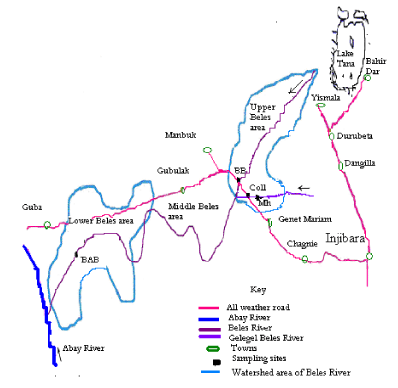
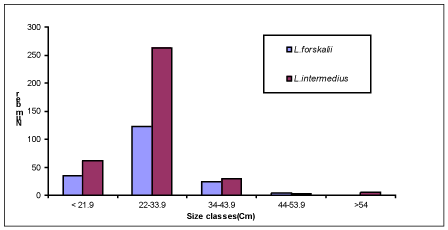
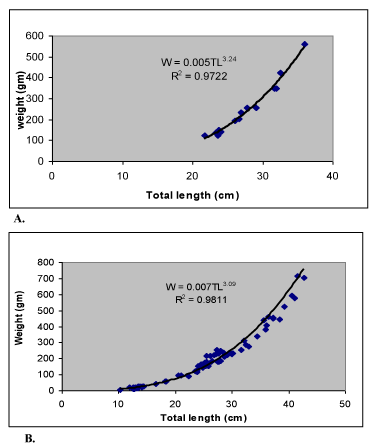
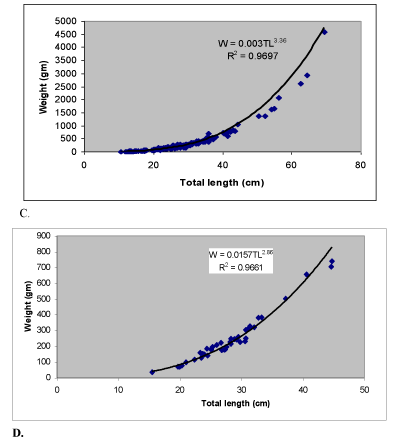
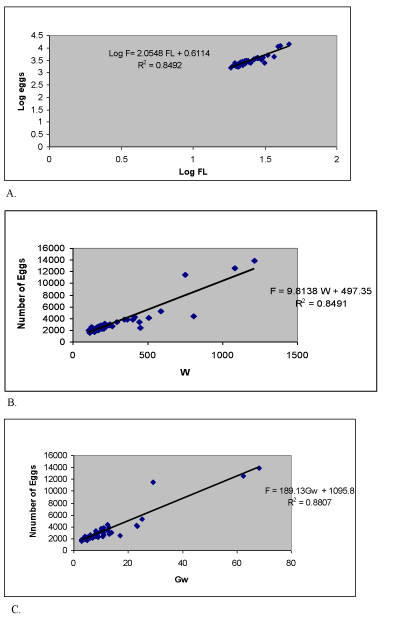
 Save to Mendeley
Save to Mendeley
